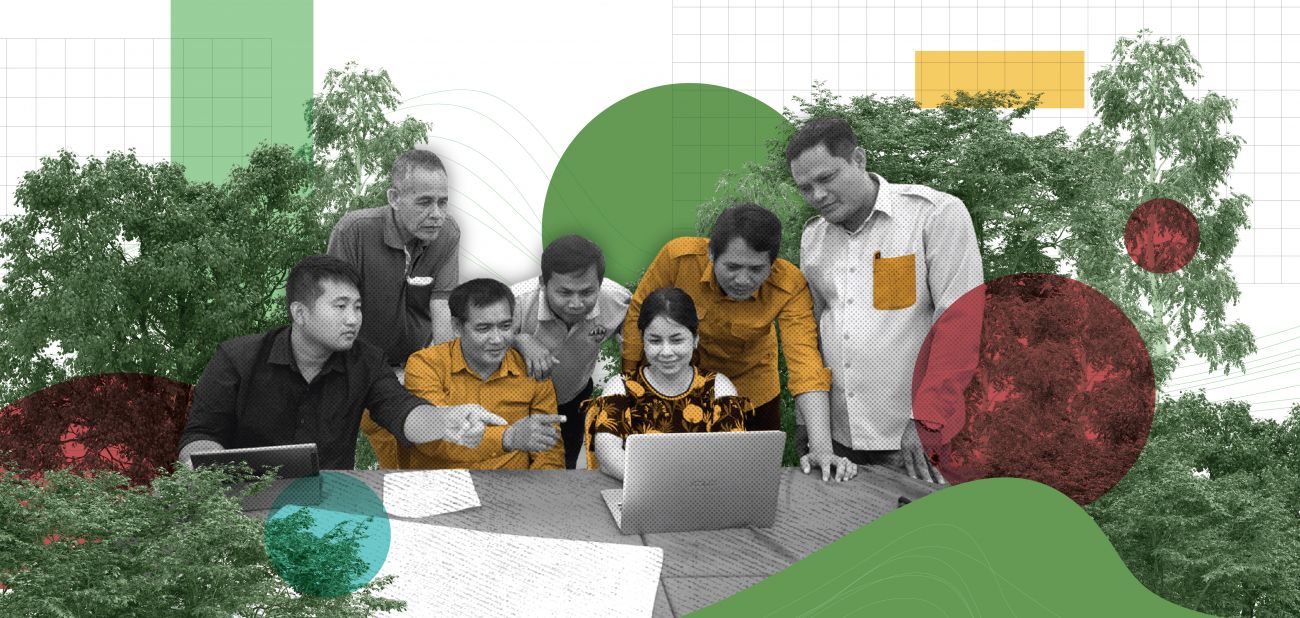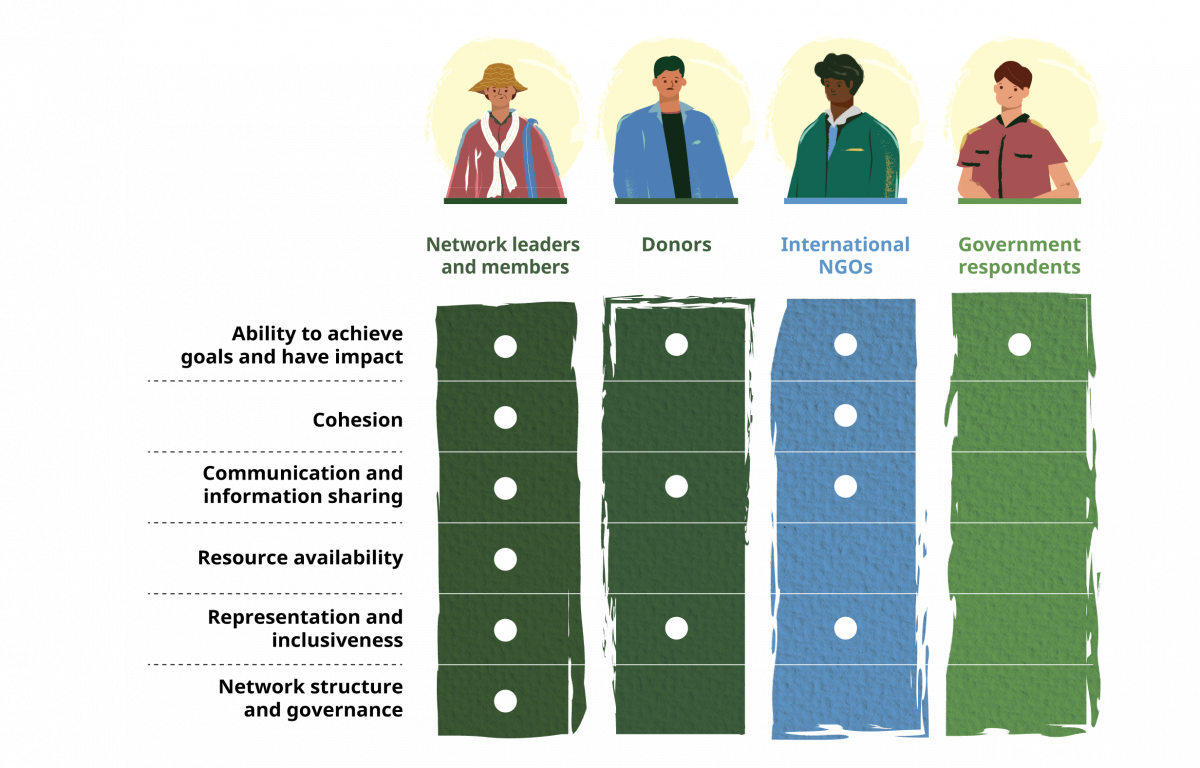

What does an effective network of CSOs look like? As the study shows, it depends on who you ask. This matters because it means that when networks, donors or governments talk about effectiveness, they might mean very different things.
The study’s interviewees suggested a diverse set of criteria for defining network effectiveness, and the study team clustered these criteria into six categories (Figure 3). One thing that all interviewee groups agreed on was the importance of networks achieving their goals.
“Effectiveness is the achievement of actions and results,” said one network member in Gabon. “An objective is set over time. And if after a certain amount of time we do not achieve the results we have set for ourselves, it means we are not effective.”
But as Figure 3 shows, network leaders and members also referred to criteria in all of the other five categories.

“From the perspectives of its members, an effective network has several characteristics,” says Aurelian Mbzibain, professor in international development and program manager at CIDT. “It achieves its goals and has impacts, and it demonstrates cohesion and power of influence. It has functional communication and information sharing systems as well as strong governance structures. It mobilizes and uses resources efficiently. And it operates with fair representation and inclusiveness.”
By contrast, the external stakeholders, such as governments and donors with which networks interact, seem to see effectiveness primarily through the lens of delivering network goals and objectives. They did not mention some of the other criteria during their interviews, However, if they had been given the option to score on these additional criteria they might have considered some of those as well.
The views of staff at international NGOs were more aligned with those of network leaders and members. They agreed that key characteristics of effectiveness include the ability to achieve goals and have an impact; network cohesion and power of influence; communication and information sharing; and representation and inclusiveness.
Our analysis shows that effectiveness is a multifaceted concept and suggests that any attempt to assess it will align with the interests and organizational perspectives of those doing the assessment.” – Aurelian Mbzibain
But unlike network members and leaders, the international NGOs did not mention network structure and governance as characteristics of effectiveness. Together with donors and government agencies, they also failed to mention financial capacity and resource mobilization as criteria for defining effectiveness.
“Our analysis shows that effectiveness is a multifaceted concept and suggests that any attempt to assess it will align with the interests and organizational perspectives of those doing the assessment,” says Mbzibain. “This implies that there is potential for issues to arise when conceptions of ‘effectiveness’ differ between networks and external actors, such as donors or government agencies. This is particularly the case around perspectives on the importance of sustainable finance.”
The study further examined the question of how to define effectiveness with its online survey of network leaders and members. The survey asked respondents to rate the importance of 10 characteristics of networks in contributing to effectiveness. In both regions, all 10 characteristics were rated as important or extremely important by more than 80 percent of respondents.
In the Mekong region, a majority said communication, involvement, shared vision and cohesion were extremely important. In the Congo Basin, a majority said this about communication, shared values, proactivity, influence and cohesion. The main difference between the regions was that respondents in the Congo Basin were much more likely than those in the Mekong region to say that ‘proactivity’ and ‘influence’ were extremely important.
This may reflect the broad inter-regional differences in network aims discussed in Chapter 1 of this report, with networks in the Congo Basin focusing more on advocacy than those in the Mekong region.
In both regions, the top-ranked criterion was ‘communication’. While a little more than half of respondents in the Mekong region rated it as extremely important, all respondents in the Congo Basin said so. This viewpoint was exemplified by one of the network members interviewed in the Democratic Republic of the Congo:
“Communication is the key word. Communication is a major element to ensure good functioning within a network. When there is no good fluidity of communication, whether it is internal or external, I think that the network will encounter huge problems. From my experience working in large networks, the biggest problem is often related to communication that is not optimal.”
This quote is revealing in that, when describing a criterion for defining effectiveness, the interviewee was also describing a factor that contributes to effectiveness. It emphasizes the nebulous nature of effectiveness as a concept, highlights the need for networks to define and assess their effectiveness, and also shows that effectiveness is not something that exists in a vacuum. The next section of this report explores in more detail what other factors can promote or limit a network’s effectiveness.
